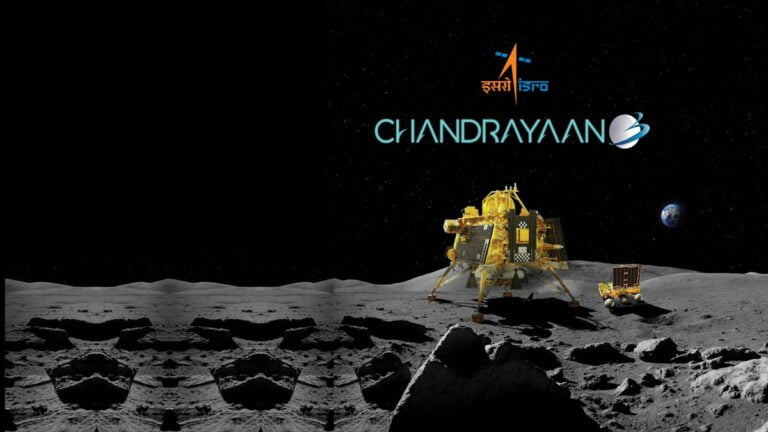In an exceptional feat of space exploration, Chandrayaan-3, India’s follow-on mission to Chandrayaan-2, has achieved a successful landing on the moon’s surface today. The mission, which aims to demonstrate end-to-end capability in safe landing and roving on the lunar terrain, marks a significant milestone in India’s space exploration endeavors.
Chandrayaan-3 consists of a meticulously designed Lander and Rover configuration. The mission was launched using the LVM3 rocket from the Satish Dhawan Space Centre SHAR, Sriharikota. The propulsion module carried the lander and rover configuration until it reached a 100 km lunar orbit. Notably, the propulsion module also carried the Spectro-polarimetry of Habitable Planet Earth (SHAPE) payload, allowing for the study of Earth’s spectral and polarimetric measurements from lunar orbit.
The Lander is equipped with various scientific payloads, including Chandra’s Surface Thermophysical Experiment (ChaSTE) for thermal conductivity and temperature measurements, Instrument for Lunar Seismic Activity (ILSA) to monitor seismic activity, and Langmuir Probe (LP) for plasma density estimation. Additionally, a passive Laser Retroreflector Array from NASA is onboard for lunar laser ranging studies.
The Rover, on the other hand, boasts payloads like the Alpha Particle X-ray Spectrometer (APXS) and Laser Induced Breakdown Spectroscope (LIBS) to determine elemental composition near the landing site. Chandrayaan-3’s indigenous Lander module (LM), Propulsion module (PM), and Rover are all designed to develop and demonstrate new technologies essential for interplanetary missions.
The primary function of the Propulsion Module is to transport the LM from the launch vehicle injection to the final lunar 100 km circular polar orbit, facilitating the separation of the LM from the PM. This module also includes an additional scientific payload, enhancing its scientific capabilities post-separation from the Lander Module. Chandrayaan-3’s designated launcher is LVM3 M4, which positioned the integrated module in an Elliptic Parking Orbit (EPO) of approximately 170 x 36,500 km.
Chandrayaan-3’s mission objectives include demonstrating safe and soft landing on the lunar surface, showcasing rover mobility on the moon, and conducting in-situ scientific experiments. To achieve these goals, the Lander is equipped with an array of advanced technologies, including altimeters, velocimeters, inertial measurement units, propulsion systems, navigation, guidance, and control systems, hazard detection and avoidance mechanisms, and an intricate landing leg mechanism.
In preparation for the mission, rigorous Lander special tests were conducted, such as integrated cold tests and integrated hot tests. These tests were instrumental in showcasing the Lander’s performance in simulated lunar conditions.
Chandrayaan-3’s successful landing and operational prowess on the moon have once again underscored India’s position as a formidable player in the field of space exploration. The achievement stands as a testament to the dedication, innovation, and scientific excellence of the Indian Space Research Organisation (ISRO).
Stay tuned for further updates and insights on this remarkable journey of Chandrayaan-3 as it continues to unfold new frontiers of lunar exploration.



